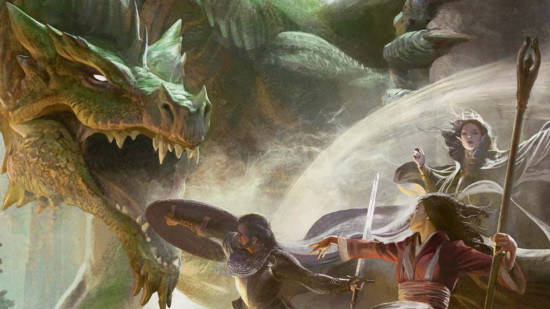DnD legendary actions are one way to make a combat encounter feel special. The best boss fights throw something unexpected at the players, and they make the main monster feel like a real threat – without totally steamrolling the party. If you want to learn more about this common stat block tactic, we’ve got a legendary actions 5e guide to show you the magic.
This is one of those Dungeons and Dragons rules you might not know much about unless you’re learning how to be a DM. While players are choosing their DnD classes and DnD races, Dungeon Masters are on the other side of the DnD campaign screen, managing 5e monsters with all sorts of abilities. D&D legendary actions are one such option at their disposal.
Here’s everything you need to know about DnD legendary actions 5e:
What are legendary actions 5e?
Some particularly challenging monsters can take legendary actions outside of their turn. These count as actions (rather than reactions or bonus actions), and they can only be used at the end of another creature’s turn.
Legendary creatures typically have multiple legendary actions they can choose from (three is a common amount). They can also only perform a certain number of legendary actions per turn. According to the 2014 Monster Manual, all uses of these actions are restored at the start of the monster’s turn.
Certain DnD conditions can prevent a monster from using its legendary actions, for example if it becomes incapacitated. Surprising a monster also prevents them from taking legendary actions until after its first turn.
That’s all the Monster Manual can tell us about legendary actions. But we expect you still have plenty of questions. Why use legendary actions at all? How exactly do they help in a big boss fight? Let’s answer these queries:
Why use legendary actions 5e?
The best reason to use legendary actions can be summed up with two simple words – action economy. A single enemy against four to six adventurers is at a serious disadvantage, purely because they can’t take as many actions. However much damage their attacks deal, they’ll eventually be overwhelmed. It’s just math.
Legendary actions are a common solution to this problem. They even the score a little when it comes to action economy, but they won’t break the balance of the encounter entirely.
While this is the main reason legendary actions appear in stat blocks, there are other reasons to include them. You might choose to create a DnD homebrew version of an existing monster, with added legendary actions, to surprise a group of veteran players who know the Monster Manual like the back of their hands. In the right circumstances, it can shake up a standard encounter without too much imbalance.
Legendary actions are also thematic. They allow a monster to do something normally forbidden (taking actions when it isn’t your turn). This communicates to the players that they’re fighting a creature of exceptional power. The stakes are high, and legendary actions help set the mood.
How do DnD legendary actions work?
To see this in (legendary) action, let’s look at an example. The first creature in the Monster Manual with legendary actions is the DnD Aboleth. At a challenge rating of ten, this creature is designed to be an even match for four level-ten characters.
Four party members mean four actions per round, right? Yes, unless the DnD Fighter uses their Action Surge to take a second action. And as long as the DnD Sorcerer hasn’t cast a Twinned Spell version of Haste 5e on the party Strikers. Four actions per round can quickly snowball into five, six, seven…
All the while, the poor ‘lil Aboleth can only take a single action. If they spend that turn using the Enslave ability, they might be able to charm one party member and convince them not to attack. But that still leaves the Aboleth open to three or more possible attacks, with no way to defend.
This is where legendary actions come in. An Aboleth can take three legendary actions between its turns:
- Make a Perception check
- Make a tail attack (+9 to hit, 3d6 + 5 bludgeoning damage)
- Psychic Drain (deal 3d6 psychic damage to a charmed target and regain that many hit points)
Each of these legendary actions has a range of uses and power levels, and it’s similar to the abilities the Aboleth already has. Making a Perception check might help in a hide-and-seek situation, but it’s not much use in up-close combat. A tail attack is a standard but useful way to spend an action, and Psychic Drain offers a spectacular way to deal additional damage to a creature you’ve already targeted.
In fact, Psychic Drain is so powerful that the Aboleth has to use two legendary action slots to activate the ability. This is common for more explosive legendary actions, and it encourages the DM to choose their extra moves strategically.
If you need more tools for running games, here are the best DnD maps and virtual tabletops we’d recommend. We can also recommend plenty of DnD books – including the latest titles from the DnD release schedule.
Source: Wargamer




